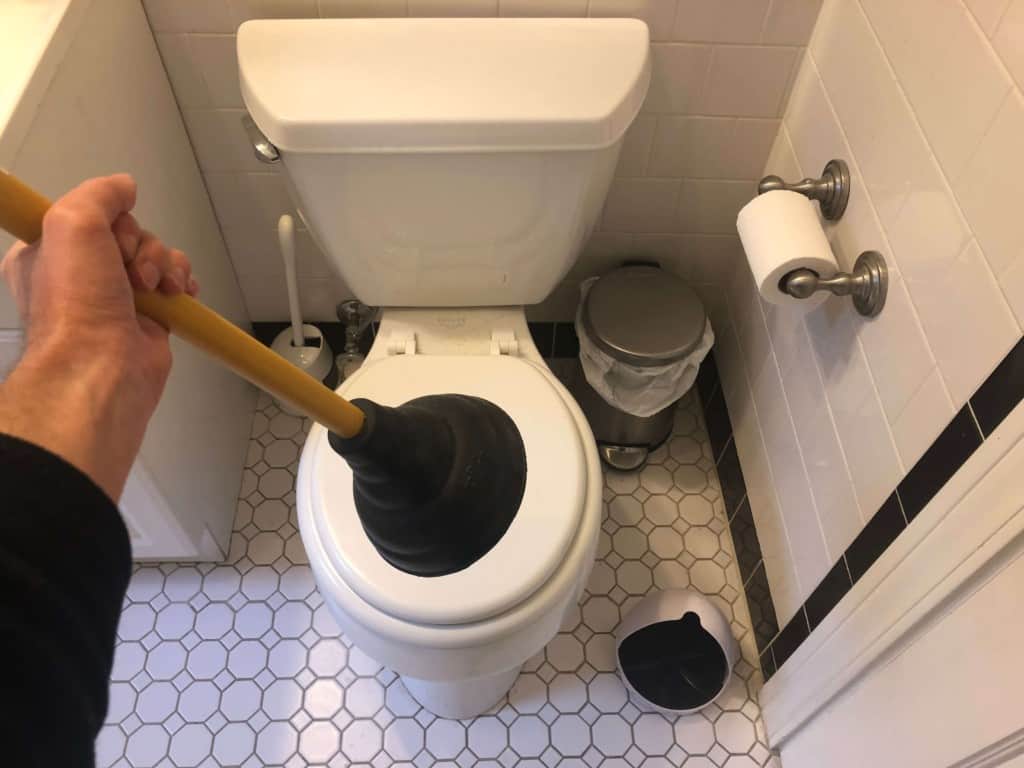
If you’ve ever been in a bathroom with a clogged toilet and no plunger, you’ve probably asked yourself: will this toilet unclog itself?
A clogged toilet will typically unclog itself over time. Most things that clog a toilet are water-soluble which means they will eventually dissolve in the toilet water. When the clog is given enough time to break down, the pressure of a flush should be enough to clear the pipes.
This might sound simple, but there are a few more things you really should know before you let that poor clogged toilet fend for itself. Let’s get to it!
Table of Contents
Will a Toilet Unclog Itself?
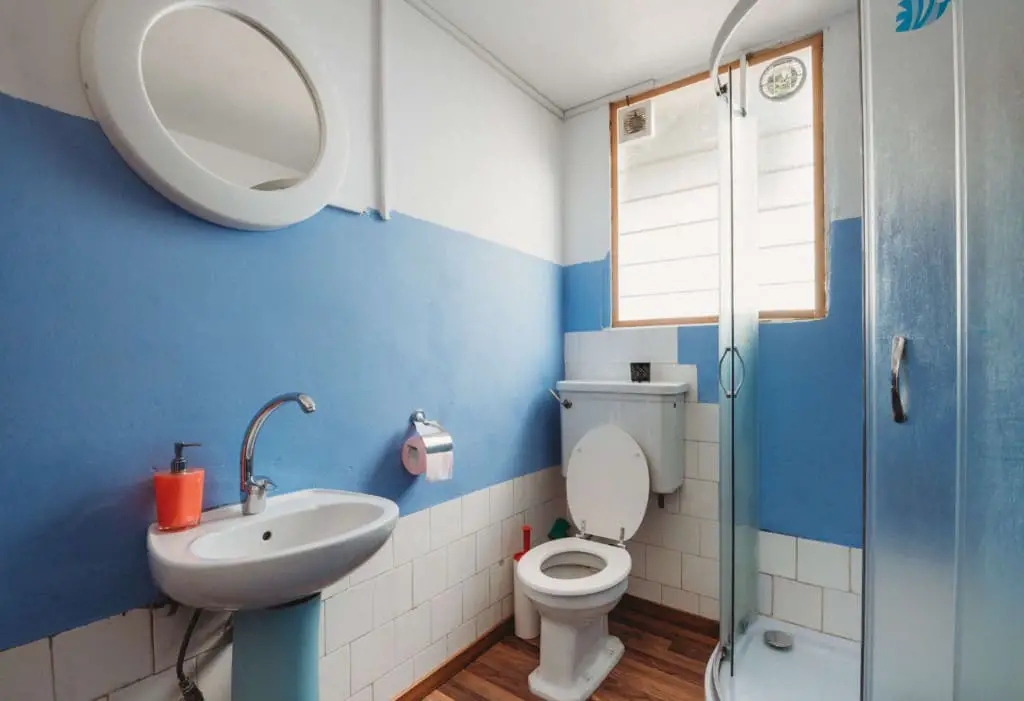
When deciding if letting your toilet unclog itself is a good option, there are two things to consider:
- What’s the cause of the clog?
- How big is the clog?
1. What Caused the Clog?
Letting the toilet unclog itself is only going to work if the things that caused the clog are organic, biodegradable materials. Basically, if you flush something other than human waste or septic safe toilet paper, the toilet will not unclog itself.
Some commonly-flushed items that are non-flushable items are feminine hygiene products, diapers, paper towels, and flushable wipes or baby wipes. These items are not degradable which means they can cause a clog in your toilet, and they can also back up your septic system, which you do NOT want.
If the clog is caused by a degradable item or it’s just a toilet paper clog, it should unclog itself. Most toilet paper dissolves in water, so if you think your clog was caused just by paper, just wait a little bit for it to dissolve then try flushing your toilet again.
I wouldn’t wait more than a couple of hours to let it dissolve before you try to flush it or before you use a plunger because it could start to smell.
If your clog was caused by a non-degradable item, it’s time to invest in a plunger and, for the sake of your septic system, stop trying to flush them.
It’s also worth mentioning that different toilet brands and models may handle clogs differently, your plumbing system can also be a factor. So, depending on the toilet and plumbing system you’re dealing with, you may have better (or worse) luck getting the toilet to unclog itself.
2. How Big is the Clog?
The next thing you need to consider is the severity of the clog. If your toilet backs up some but then drains slowly, you have a partial clog. This type of clog is the easiest to clear and the most likely to unclog itself.
If you’re wondering how long to wait, I’d say 30 minutes to an hour should be enough to dissolve most partial clogs as long as they clog is caused by a degradable material.
However, if you have a severe clog or blockage where your toilet doesn’t drain at all, it’s unlikely that your toilet will unclog itself.
So, if you have a big clog, or it just doesn’t seem like something that can clear itself, I suggest grabbing a plunger and fixing it as soon as possible. Personally, I’d rather be safe than sorry, especially when the consequences involve mopping up dirty toilet water.
If you don’t have a toilet plunger and you’re getting desperate, don’t worry, in the next section, we have some ways to plunge without a plunger.
How to Unclog Your Toilet Without a Plunger
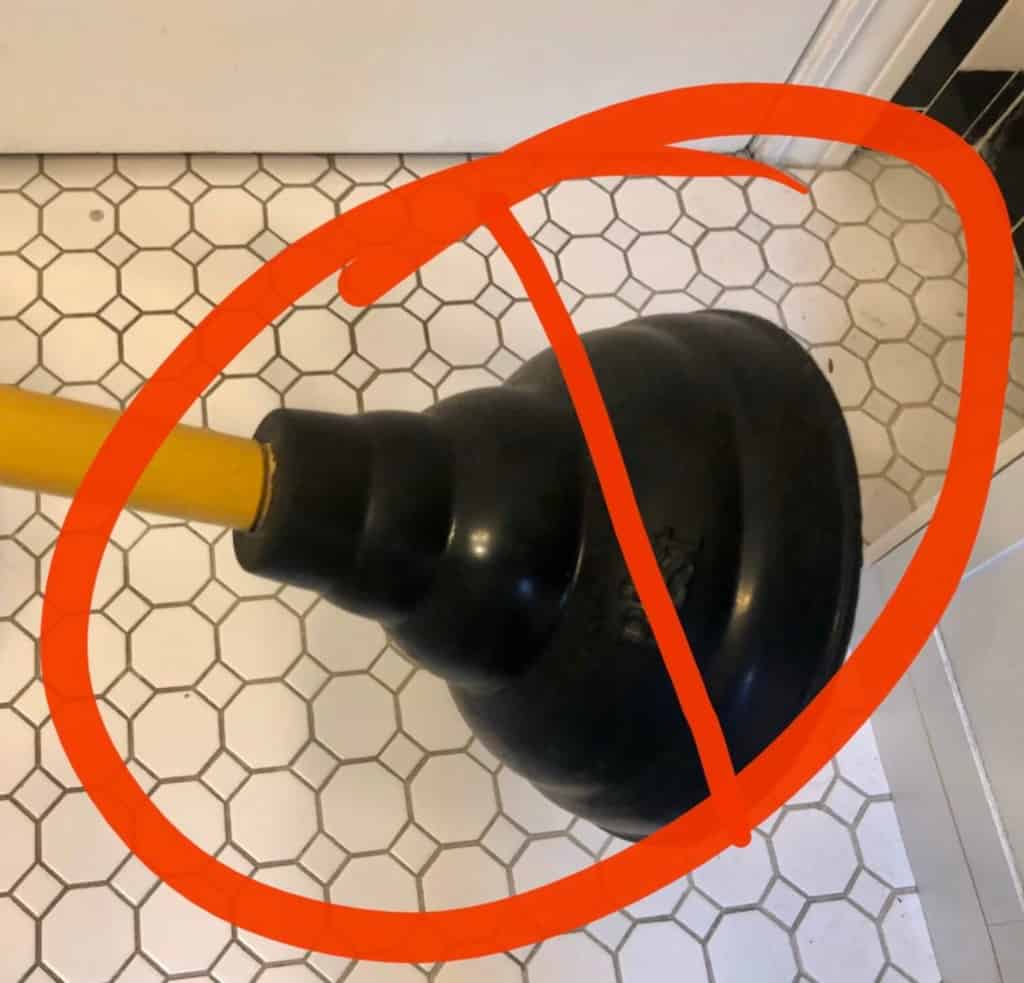
There are three easy ways to unclog your toilet with things most people have around their homes. Let’s dig right in.
1. Toilet brush
The first way you can unclog your toilet without a plunger comes from personal experience. Once, in the middle of moving to a new apartment, my toilet got clogged and my plunger was packed in a box. But, I’m a quick thinker, so I grabbed the next best thing, my toilet brush.
While a toilet brush may not be as effective as a plunger, it can accomplish the same task.
A plunger works by forcing water through your toilet plumbing with more pressure than just a normal flush. This dislodges the clog and lets water flow freely.
So, although the toilet brush may not be able to force as much water through with as much pressure as a plunger, it can still get out the small clogs. Desperate times, desperate measures.
2. DIY Plumbing Snake
If you’ve got a clog too big for your toilet brush or plunger to handle, you can make your own plumbing/toilet snake using a wire coat hanger.
A plumbing snake is a long piece of wire that a plumber will put through drains in order to break up clogs.
To make your own, simply unfold a clothes hanger and work it through your toilet drain. If you feel resistance, try to work the toilet snake around to break up the clog.
If you decide to try this method, I advise using a plastic-coated wire hanger or bending the end of the wire hanger as the sharp metal on the end could scratch the porcelain of your toilet.
3. Hot Water
If the water in your toilet will still drain slowly, putting hot water down the drain can help dissolve the clog.
You don’t want to use boiling water, as the shock could cause your toilet to crack. Getting hot tap water from your sink or your shower should work just fine.
Once you have your hot water, just pour it right in. If your toilet is draining slowly or not at all, be careful with this because you could cause your toilet to overflow by accident.
If the clog is still stubborn, try a combination of these three methods to break it up.
How to Prevent Your Toilet from Overflowing When It’s Clogged
If you’ve got a toilet clog, it’s a good idea to know how to keep it from overflowing while you try to get it unclogged.
First things first, if your toilet is clogged and not draining, don’t flush it.
Now that we have that covered, the main way to prevent your toilet from overflowing is to keep the tank on your toilet from refilling.
How to Keep Your Toilet Tank from Refilling
There are a couple of ways to accomplish this goal. The first and easiest way to shut off the water to your toilet is to turn off your toilet water valve.
1. Turn Off The Toilet Water Valve
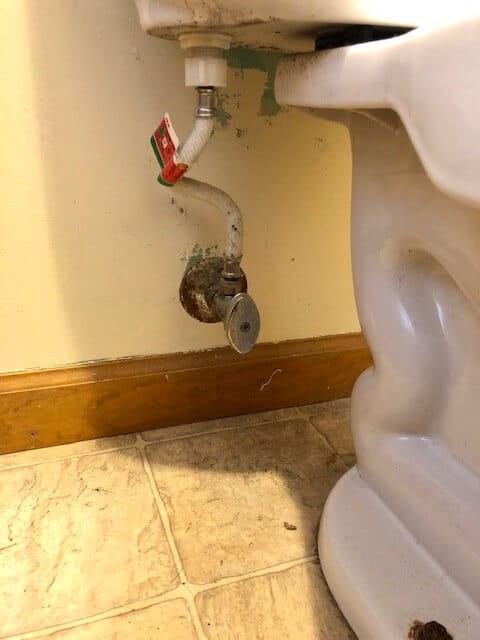
Almost all toilets have a pipe and valve connected to the tank towards the back of the toilet, see the image above to see what I’m talking about.
Turn this valve off to prevent water from refilling your tank. Righty tightey, lefty loosey.
If your toilet doesn’t have one of these, it’s in an awkward position, or it’s just too hard to turn, don’t worry, you can still stop the toilet from refilling using the next method.
2. Raise the Toilet Float
Another way to prevent your toilet from refilling is to raise the toilet float.
The tank on a toilet refills when the float in the tank drops below a certain level. You can prevent this from happening by raising your toilet float.
Don’t worry if you have no idea what I’m talking about, it’s super easy.
When you lift the lid off your toilet tank, it should look something like this:
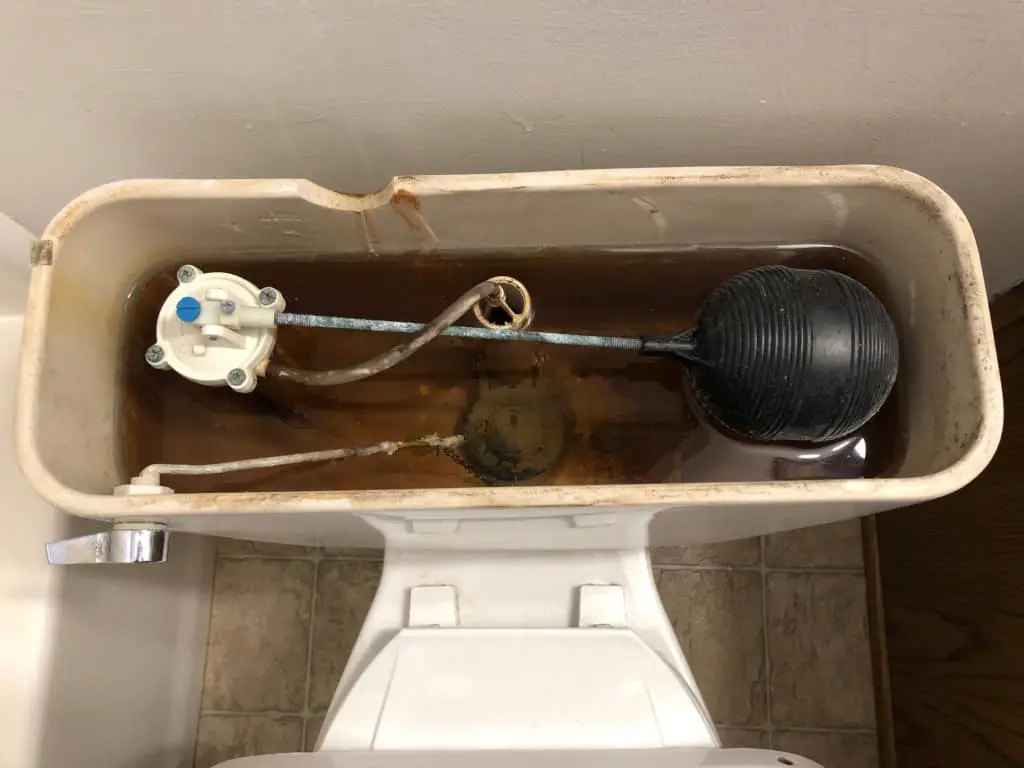
All you have to do is grab the float, the ball-shaped object on the end of a pole, raise it out of the water, and secure it there.
You can secure it by raising its level with the top of the tank and sliding something under it to keep it there. Don’t worry about touching the water in the toilet tank, it’s clean tap water.
This will prevent the tank from refilling with water so, even if you accidentally flush it, you won’t be able to flush it again.
3. Turn Off Your Home’s Water
If neither of the above options works, the last ditch effort would be to shut off water to your whole house. This only works if you have access to the main shut-off.
If you live in an apartment, sometimes you won’t have access to your own water shut-off. If that’s the case and you have water overflowing onto your bathroom floor, you should call your building maintenance or call a local plumber to help you fix the problem.
Your water shut-off valve is usually located near your water heater which can usually be found in a basement or a maintenance closet.
When You Should Call a Professional Plumber
If you’ve tried everything here to try and unclog your toilet, or if you’re uncomfortable doing anything more on your own, then it’s time to call in some professional help.
The problem with your clog could be something unrelated to what you flushed down the toilet, it could be a plumbing issue.
If too many non-water-soluble materials get flushed down your toilet, it could cause issues farther down the pipes.
Or, if your home or apartment is attached to a city line, it could be a problem with the main sewer line.
Your local plumber will be able to tell you what the issue is and fix it for you. They have access to special tools and different methods that you wouldn’t be able to do on your own.
When your plumber comes to check out your toilet, they will want to know things such as: what things you tried to unclog it, what could have caused the clog, if you flush hair or menstrual products down the toilet, and how long it’s been since your toilet was able to flush normally.
With a professional plumber on your side, you won’t have anything to worry about with your toilet.
Related Questions
Can You Unclog a Toilet Without a Plunger?
There are several ways to unclog a toilet without a plunger. For instance, you could use a toilet brush, which can resolve less severe clogs. It’s also possible to unclog a toilet by slowly pouring hot water down the drain, or by fashioning a DIY plumbing snake.
Will Toilet Paper Dissolve in a Clogged Toilet?
Most toilet paper dissolves in a toilet bowl, which can help to fix clogs that are caused by toilet paper. If you’re unsure about your brand of toilet paper, you can check the label to make sure it’s septic system-friendly. If it is, that means it will dissolve easily in water.

